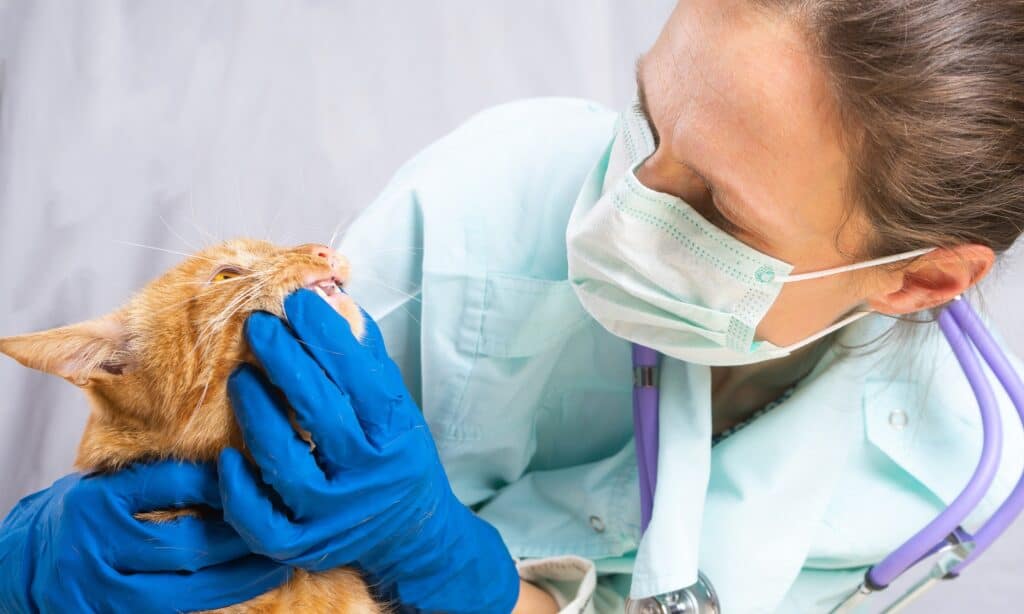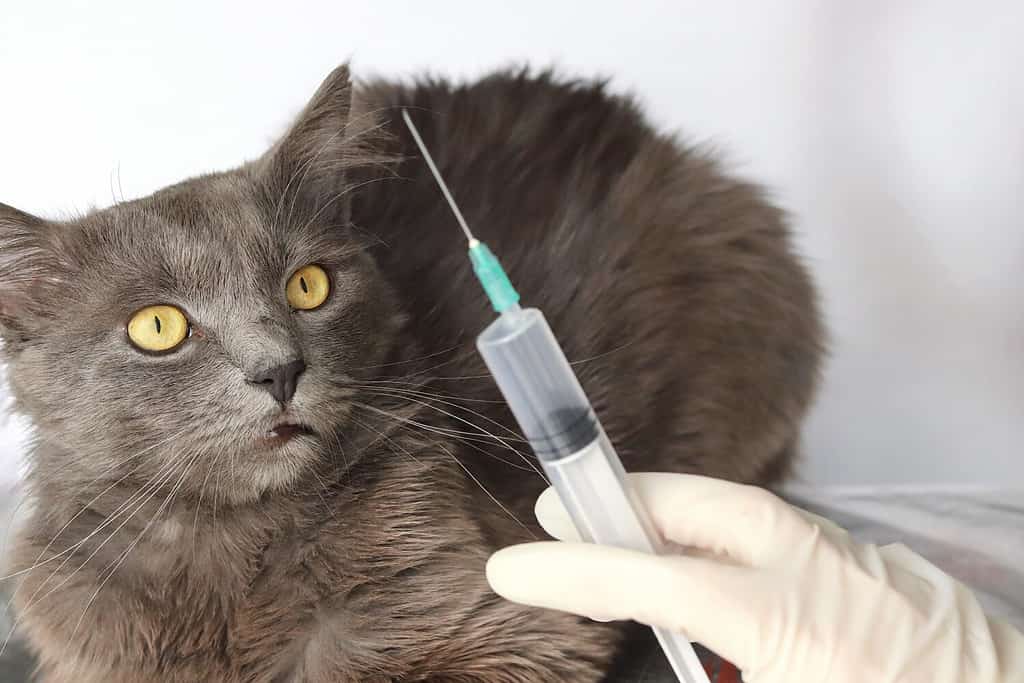What is Doxycycline?
A tetracycline antibiotic that is semi-synthetic and produced from oxytetracycline is doxycycline. It can be administered intravenously or orally, depending on the animal. Antibiotics made of tetracycline have a broad spectrum and are bacteriostatic.
Their mode of action involves preventing the synthesis of proteins and changing how permeable the cytoplasmic membrane is in the sensitive organism. Since doxycycline becomes more lipid-soluble compared to different tetracycline antibiotics, it may be more effective in places that are hard to access, including the synovial fluid, the prostate, the nervous system, and the eyes.
What is Doxycycline Used For?

Keeping your cat healthy is essential with regular check-ups and vaccination.
©Pressmaster/Shutterstock.com
Cats can suffer from a wide range of ailments that one can treat with doxycycline. It usually acts as an antibiotic for managing infections of the mouth, urinary system, and respiratory tract. That includes periodontal disease and typical feline colds and infections.
Additionally, it is crucial in the management of infections that come from ticks, such as Lyme disease. A vet can also use doxycycline with other drugs for the management of autoimmune illnesses because of its capacity to impact the immune system.
This drug is a tetracycline antibiotic that is powerful against a wide range of gram-positive and gram-negative bacteria as well as a broad range of other things, such as:
- Rickettsia
- Spirochetes
- Lyme Disease
- Mycoplasma
- Urinary tract infection
- Lupus
- Leptospira
- Anaplasma
- Anemia
- Chlamydia
Doxycycline is well absorbed when taken orally, and the existence of kibble in the stomach has no impact on how well it is absorbed. Since doxycycline is mostly removed through the GI system, it may be administered to animals with impaired renal function.
Side Effects of Doxycycline
Cats often handle doxycycline nicely. The most frequent adverse reactions are a decrease in appetite, nausea, and vomiting. Cats may also experience a decrease in energy and may sleep more. Doxycycline is the tetracycline antibiotic with the lowest risk of contributing to a darker pigmentation of growing teeth.

©iStock.com/Dmitrii Balabanov
Doxycycline in high doses may prevent cats from growing long bones like the femur and humerus. A stricture, also known as esophageal scarring or constriction, can occur if the pill or capsule becomes stuck in the esophagus.
Drug Interactions
Because of potential complications that could decrease the antibiotic’s effectiveness, doxycycline shouldn’t be administered with milk or foods high in calcium or iron. Antacids and coating agents like sucralfate reduce absorption through the mouth.
Digoxin, a cardiac drug, can have an increased effect when taken with doxycycline, whereas phenobarbital, an epileptic drug, can have a decreased effect. One must use anticoagulants carefully when giving them to your cat.
Prior to administering doxycycline to your feline friend, always let your veterinarian know if your cat is receiving any other medicines or drugs.
Doxycycline Dosage For Cats

Dogs and horses often receive Doxycycline through an IV.
©Alesia Fes/Shutterstock.com
The weight-based doxycycline dose for cats means that two cats living in the same home may require varying doses. If one cat weighs more than another that needs the drug, their doses will be different. Always abide by the veterinarian’s advice on dosage and usage.
Doxycycline is an antibiotic, therefore you must give it to your cat for the full recommended course of treatment once you begin. If you don’t, your cat can develop antibiotic resistance and remain sick.
The liquid form of doxycycline should generally be administered to cats when it’s available. If the vet recommends a pill or capsule, drink 5mL (1 teaspoon) of water after every dose. If you forget to give your feline friend a dose, you should resume taking the medication when it is time for the following dose.
Contact the vet if you skip more than one dosage. Never give your cat multiple doses of doxycycline at a time.
How Much Does Doxycycline Cost?
Doxycycline comes in pill form, which is reasonably priced. At the time of writing, prominent businesses were selling a typical number of doxycycline 100mg tablets for $6 to $30. Costs for the liquid version range from $40 to $60.
When treating cats, doxycycline is frequently formulated into gels or liquid solutions. It can also be sweetened to help pets take their dose. The price of compounded drugs varies from one pharmacy to another, especially if you have pet insurance.
Alternatives to Doxycycline

Children’s Benadryl has the active ingredient Diphenhydramine HCl and is great for cats 12lbs and under.
©H‑E‑B, LP – License
Instead of doxycycline, alternative broad-spectrum antibiotics can be utilized. These may include additional tetracyclines and the following:
- Amoxicillin
- Clindamycin
- Enrofloxacin
- Orbifloxacin.
For cat use, each of these antibiotics needs a prescription from a veterinarian. They are the most qualified person to make an accurate diagnosis and recommend treatments for any illness.
For chlamydophila felis infections, which result in eye-watering, swelling, and partial closure as well as finally producing colored discharge or muck that resembles pus, doxycycline is the drug of choice.
One way to manage this condition is to avoid it with a vaccination by the name Nobivac.
Natural Alternatives
There aren’t many natural alternatives to antibiotics. Nevertheless, there are natural remedies that can reduce uncomfortable symptoms, based on the kind of infection. These are meant only to alleviate discomfort and distress as a component of a professionally-guided integrative treatment plan; they shouldn’t be used in place of receiving veterinary treatment or antibiotics.
The photo featured at the top of this post is © Stock-Asso/Shutterstock.com
Thank you for reading! Have some feedback for us? Contact the AZ Animals editorial team.






